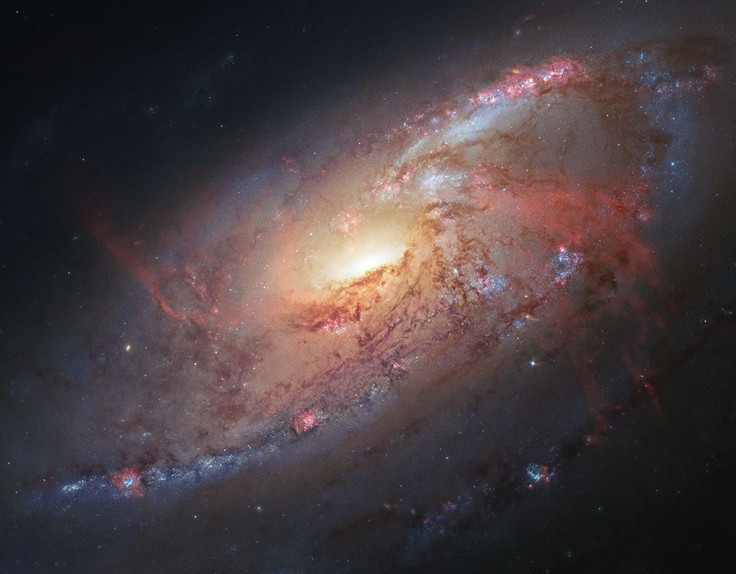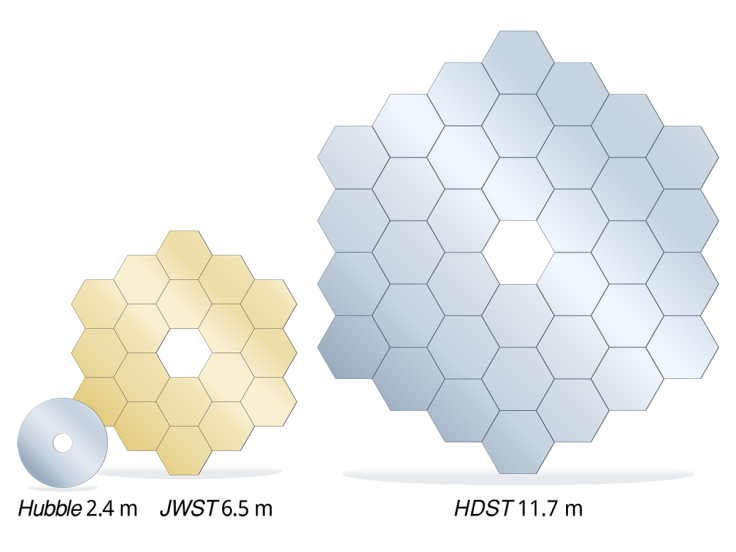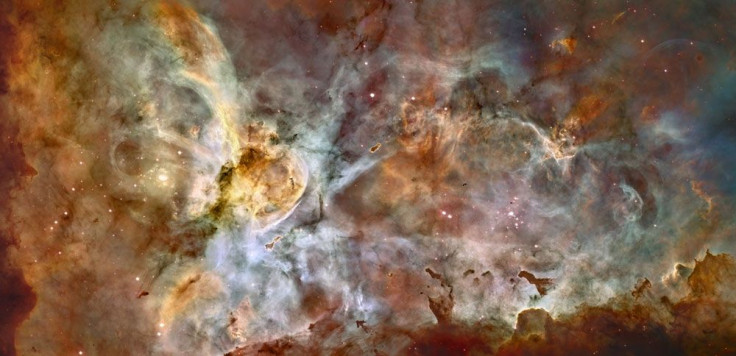Astronomers And Astrophysicists Want A Giant New Space Telescope To Replace Hubble And Find Life Elsewhere In the Universe – And It Will Only Cost $9B

Somewhere in a distant galaxy, or perhaps in a solar system right next door, life almost certainly stirs on a planet not unlike our own -- warm and replete with water and an oxygen-rich atmosphere. But scientists have so far been unable to find it, or say with certainty where it is most likely to appear among thousands of planets identified elsewhere in the universe, many of which harbor favorable conditions.
A group of leading astronomers Monday proposed a giant space telescope dubbed the high-definition space telescope, or HDST, to help scientists snap the highest-resolution images to date of far-away galaxies and examine the atmospheric makeup of scattered exoplanets, the surest path to finding life elsewhere in the universe.
The telescope would feature a 12-meter-wide (or 39 feet in diameter) mirror, which is so large it would need to be folded like a bird’s wings into a rocket for launch. Marc Postman, an astronomer at the Space Telescope Science Institute in Baltimore, said the behemoth instrument would cost roughly the same as the James Webb Space Telescope, which is preparing to launch in 2018 to replace the famous but aging Hubble Space Telescope. The budget for the Webb was originally estimated to be $6.5 billion but is quickly approaching $9 billion.

The expensive proposal was floated by the Association of Universities for Research in Astronomy (AURA), a coalition of 40 U.S. institutions and four international partners that operate observatories, in a presentation moderated by astrophysicist Neil deGrasse Tyson and hosted by the American Museum of Natural History in New York. AURA was instrumental in executing the scientific mission of the Hubble and will provide similar services to NASA for the Webb.
The group hopes HDST will earn a spot in the 2020 Decadal survey, a priority-setting exercise conducted among the nation’s astrophysicists every 10 years and presented to Congress for funding. But after the Webb's budget ballooned so signficantly, the committee members who drafted the project's proposal knew they would have their work cut out for them in convincing Congress and the public to back another big project. Their official project report cautions large projects such as HDST may be perceived as crowding out smaller priorities in an era of “flat or declining budgets” at both NASA and the National Science Foundation. But at Monday’s presentation, supporters emphasized the scientific and philosophical value of investing in ambitious, longterm missions aimed at answering basic questions such as “Where did we come from?” and “Are we alone?”
“History has shown that developing a flagship mission involves navigating financially challenging environments, but history has also shown that when the scientific case is sufficiently compelling, the budgetary hurdles can be overcome,” the report states.
Julianne Dalcanton, an astronomer at University of Washington in Seattle, said the telescope's main mission would be to observe hundreds of Earth-like planets in the habitable zone surrounding stars in neighboring galaxies and solar systems in hope of discovering life. It would also carry detectors to study dark matter and instruments to determine how the distribution of gases in the universe leads stars to form.
"Life has formed at least once,” Dalcanton said. “There's a lot of stars and there's a lot of planets around those stars and this telescope will hopefully show us that it's happened again."

Finding exoplanets has been the focus of several recent missions including those of the Kepler space telescope, which confirmed the existence of more than 1,000 exoplanets, and the Transiting Exoplanet Survey Satellite, which is scheduled to depart in 2017 to monitor 500,000 stars for changes in brightness that indicate the presence of an exoplanet. The Kepler mission led scientists to believe there are roughly 600 stars within 100 light-years of Earth, and about 10 percent of those stars harbor planets about the size of Earth at an optimal temperature for life. HDST will focus on stars with Earth-like planets that are within 200 light-years of Earth.
While it’s already clear there are plenty of exoplanets in the universe, Sara Seager, an astrophysicist specializing in exoplanets at the Massachusetts Institute of Technology, said the new telescope’s suite of cameras and spectographs can more accurately examine exoplanets for the presence of water vapor and “biosignature gases,” such as oxygen and methane, which suggest the presence of life.
The Hubble, which AURA President Matt Mountain called “the icon of modern science,” has circled the Earth in low orbit since 1990 and given scientists a better understanding of how the universe evolved and the nature of black holes. The HDST would be five times sharper and up to 100 times as sensitive. That’s a high enough resolution to see geysers on Jupiter’s moon Europa or track changes on the surface of Pluto.

"A telescope with these capabilities has a potential for discovery that dwarfs anything we've ever thought of before,” Dalcanton said. "It will absolutely drive revolutions across astrophysics."
Tyson pointed out many of the Hubble’s most famous discoveries were never even conceived in the planning stages -- suggesting the launch of such a grand telescope could lead to many more lessons than even the most ambitious scientists currently can anticipate. He added the telescope might even help humans to monitor rogue comets or asteroids that threaten Earth-bound species with extinction.
The Webb is expected to last about 10 years. The HDST would launch in the 2030s and is intended as a replacement for the replacement of the Hubble. As Mountain noted, astronomers prefer to plan ahead.
“We're asking the question, 'What do we need to have in space 25 years from now?'” he said.
HDST would be placed a million miles from Earth in a corner of the universe known as Sun-Earth Lagrange 2 point, which is a gravitationally stable region where the telescope could hang in balance with relative ease. However, this point is too far out to be regularly serviced by astronauts as Hubble was, so the new telescope’s lifespan would likely be shorter -- only about 10 years. Michael Shara, curator for astrophysics at American Museum of Natural History, said that lifespan could be extended if the commercial space industry builds space-based refueling stations or someday manages to send astronauts safely on distant missions.
© Copyright IBTimes 2024. All rights reserved.





















